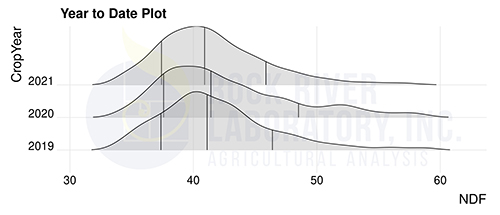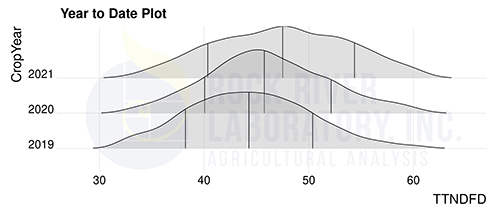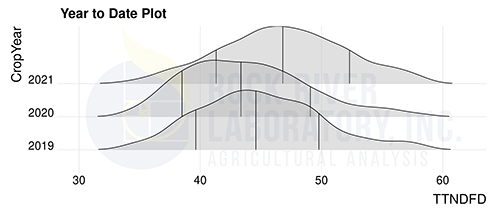
The growing season for many started with a bang. Near ideal soil conditions and limited rain events have made for streamlined planting in many regions. According to USDA reports, planting across the U.S. has tracked well ahead of historical averages.
The alfalfa and grass harvest has also apparently tracked well for many. The first cutting each year with hay or haylage crops tends to set the tone for the forage season. Yield and quality are often superior for this primary cut.
To the yield point, I’ve had numerous farmers and industry colleagues comment that the yield has been exceptional. In some cases, yield gains may have been tied to delayed cutting following a few minor but untimely rainfalls that prevented cutting and harvest.
Typically, high yielding forage corresponds to lesser forage quality; however, recent insight from Rock River Laboratory’s database suggests the forage quality is trending nicely relative to 2019 and 2020 growing seasons. More on this shortly.
With alfalfa and grass, forage quality is primarily defined by fiber content and digestibility. This year, with protein and grain prices at a premium, we should opt to prioritize protein content in forage toward the top as well. Consult with your agronomist regarding fertility or crop protection options you have that can boost protein content. Research-backed sulfur, micronutrients, or crop protection applications may offer substantial return on investment.
Fiber is fantastic
Digging into the crop quality database, fiber content is down and fiber digestibility is up throughout the Midwest and the East. In Figures 1 through 4, note that the fiber (NDF) content is less and fiber digestibility (TTNDFD) is up for samples analyzed by Rock River Laboratory from May 1 to June 10 for this year relative to the prior two years. The figures portray database population distributions, with the 15th, average, and 85th percentile denoted with vertical black lines in each year’s distribution.
What about the West?
For the West, hay is how alfalfa is harvested and fed. We’re recognizing similar fiber content in hay for 2021, but similar gains in fiber digestibility as the eastern U.S. These trends can be visualized in Figures 5 and 6. The West has been exceptionally dry unfortunately, but this may be a factor influencing and increasing the fiber digestibility with the hay crop harvested to date. Early season temperature is also likely an influencing factor.
We need rain
In general, the hay and haylage crops are coming into hay sheds and silos or bunkers at high quality. This has been a strong positive to start the 2021 harvest season. However, the limited rain referenced above has continued well into June and another tale may be playing out in an opposite direction.
Speaking with growers from West to East, we’re in need of rain. Checking in with the U.S. Drought Monitor, recognize that many corn acres are under moderate to severe drought. The current growing conditions warrant close monitoring in conjunction with your consulting agronomist.
While the news may not be ideal, we can proactively make decisions throughout the growing season with the current best information in hand. Your farm may opt to consider alternative drought friendly forage varieties like sorghum, sudangrass, or teffgrass to maintain forage inventories. Tom Kilcer with Advanced Ag Systems has recently offered planting and management considerations with these alternatives in mind.
While the growing season appears to have two distinctly different tones to it at this point, we have much to be thankful for to this point with 2021. Take up these discussion points with your agronomist and nutritionist to keep your farm on the leading edge this growing season.














